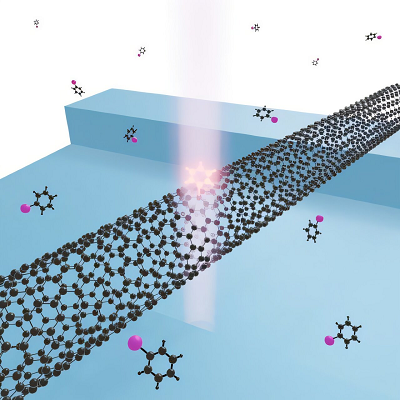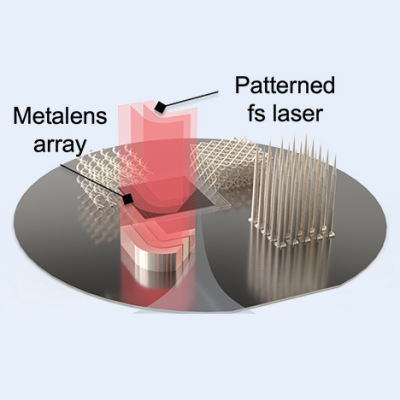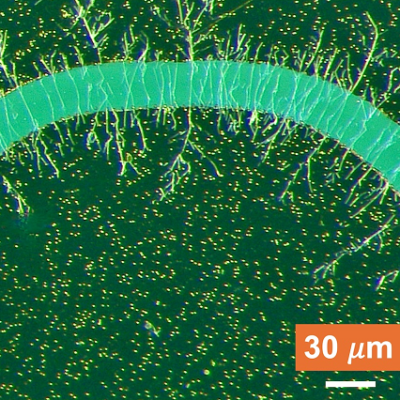Their achievement was published in the journal Nature Materials on Nov. 29, 2021.
Sophisticated cognitive tasks, such as image and speech recognition, have seen recent breakthroughs thanks to deep learning. Even so, the human brain still executes these tasks without exerting much energy and with greater efficiency than any computer. The development of energy-efficient artificial neurons capable of emulating brain-inspired processes has therefore been a major research goal for decades.
Researchers demonstrated the first integration of a cognitive computing nano-element - the memristor - into another - a spintronic oscillator. Arrays of these memristor-controlled oscillators combine the non-volatile local storage of the memristor function with the microwave frequency computation of the nano-oscillator networks and can closely imitate the non-linear oscillatory neural networks of the human brain.
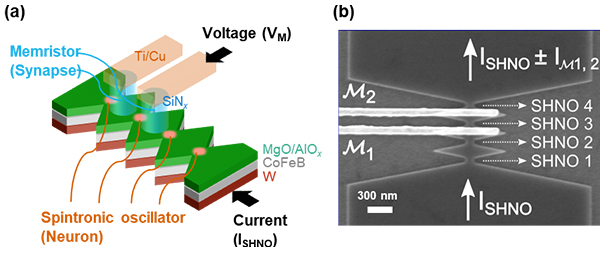
A cartoon (a) and scanning electron microscopy image (b) of four spintronic oscillators (SHNO 1-4) with two memristor gates (M1, M2).
"So far, artificial neurons and synapses have been developed separately in many fields; this work marks an important milestone: two functional elements have been combined into one," said professor Shunsuke Fukami, who led the project on the Tohoku University side. Dr. Mohammad Zahedinejad of the University of Gothenburg and first author of the study adds, "Using the memristor-controlled spintronic oscillator arrays, we could tune the synaptic interactions between adjacent neurons and program them into mutually different and partially synchronized states."
To put into practice their discovery, the researchers examined the operation of a test device comprising one oscillator and one memristor. The constricted region of W/CoFeB stack served as an oscillator, i.e., the neuron, whereas the MgO/AlOx/SiNx stack acted as a memristor, i.e., the synapse.
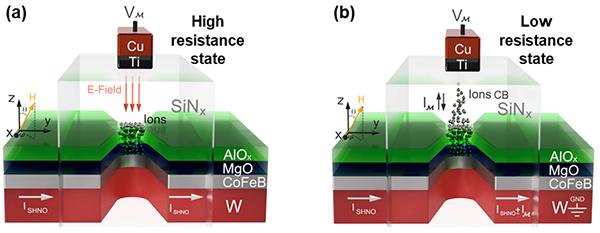
A schematic of a memristor-controlled spintronic oscillator in two of its fundamentally different resistive states; (a) electric-field controlled mode at high-resistance state and (b) current controlled mode via conducting bridge (CB) at low resistance state.
Resistance of the memristor changed with the voltage hysteresis applied to the top Ti/Cu electrode. Upon voltage application to the electrode, an electric field was applied at the high-resistance state, compared to electric current flows for the low-resistance state. The effects of electric field and current on the oscillator differed from each other, offering various controls of oscillation and synchronization properties.
Professor Johan Åkerman of the University of Gothenburg and leader of the study expressed his hopes for the future and the significance of the finding. "We are particularly interested in emerging quantum-inspired computing schemes, such as Ising Machines. The results also highlight the productive collaboration that we have established in neuromorphic spintronics between the University of Gothenburg and Tohoku University, something that is also part of the Sweden-Japan collaborative network MIRAI 2.0."
Read the original article on Tohoku University.



